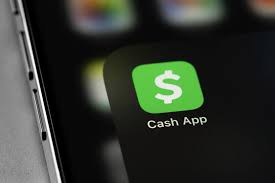Majority of Consumers Now Own 4 or More Connected Devices: Key Insights for 2023

How Consumers' Tech Usage Shapes Payment Preferences
In today's digital age, the way consumers choose to pay is increasingly influenced by their relationship with technology. A recent report titled “How People Pay: Consumer Preference for Connected Technology,” highlights a growing divide between those who embrace advanced tech and those who are satisfied with basic connectivity. This article delves into the findings of this report, exploring how different consumer segments' technology ownership impacts their payment behaviors.
Understanding Tech Savvy Personas
The report categorizes consumers into three segments based on their level of technology ownership: Basic Tech, Mainstream Tech, and Connected Tech. These segments reflect distinct technology portfolios, which in turn shape their payment preferences. Over time, there has been a notable increase in the number of consumers owning four or more connected devices. This trend is driven by the accessibility of connected devices and their integration into everyday life.
Despite the growth in technology adoption, the majority of consumers remain in the basic or mainstream tech categories. Only about 10% of consumers are classified as Connected Tech, indicating a significant gap between these early adopters and the rest. Connected Tech consumers prioritize being connected and own a variety of devices beyond the typical smartphone and laptop, such as voice-activated devices, security systems, and connected cars.
Payment Preferences of Connected Tech Consumers
The divergence in device ownership is closely linked to payment preferences. Connected Tech consumers show a strong preference for digital payment methods and online shopping. The report highlights a trend among these consumers to move away from physical payment forms, favoring mobile and contactless options for their convenience and seamlessness.
Key Findings from the Report
Generational and Economic Influences
The report also uncovers generational and economic dynamics affecting consumer payment preferences. Millennials and bridge millennials lead in technology ownership, being three times more likely to be advanced users compared to baby boomers. This reflects the impact of generational exposure and purchasing power on technology adoption.
Conversely, low-income consumers tend to stick with essential devices like smartphones and laptops. For these consumers, such devices provide sufficient access to the digital economy, even if income constraints limit their ability to adopt a wider range of connected experiences.
Stability in Device Ownership
While the ownership of device types has remained relatively stable over the past two years for most consumers, indicating contentment with their current range of devices, Mainstream Tech consumers are increasingly relying on mobile devices for purchases. This points to a growing trend of mobile shopping across broader consumer segments.
Conclusion
The report, "How People Pay: Consumer Preference for Connected Technology," sheds light on how consumers' technology ownership influences their payment preferences. While the majority remain in basic or mainstream tech categories, Connected Tech consumers are at the forefront of adopting digital payment methods. As technology continues to integrate into daily life, understanding these preferences is crucial for businesses aiming to cater to evolving consumer needs.










































